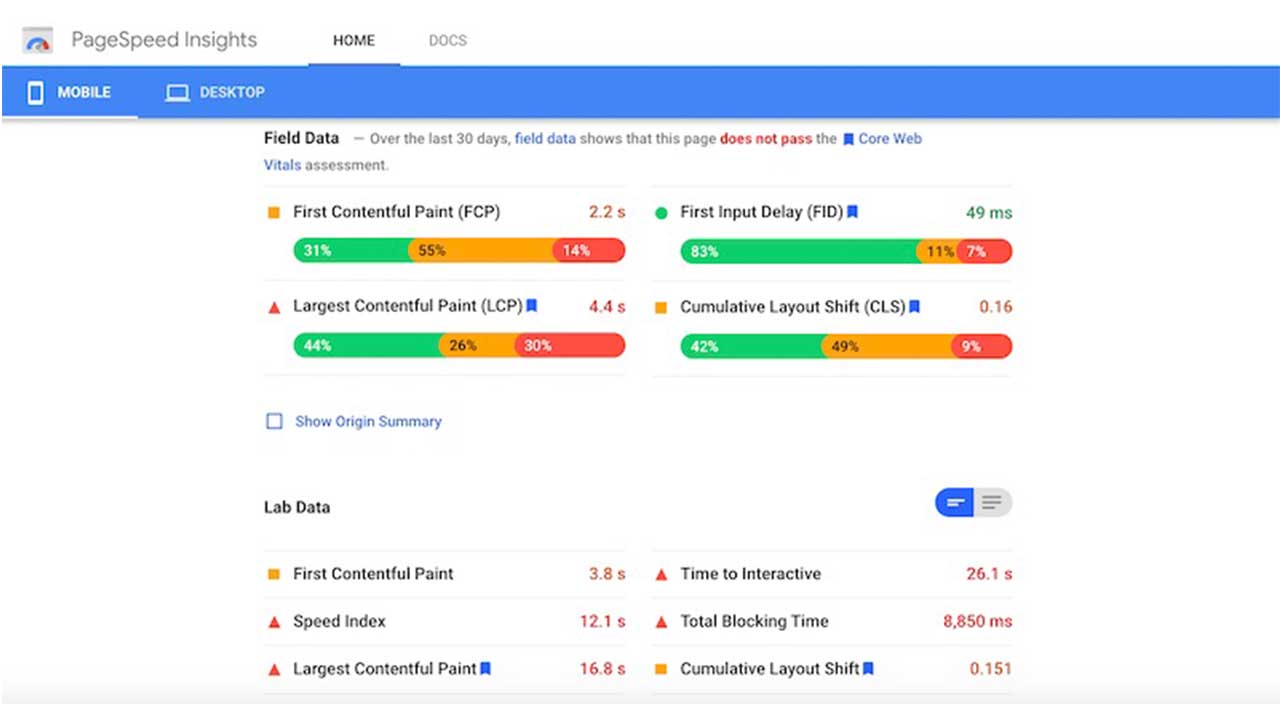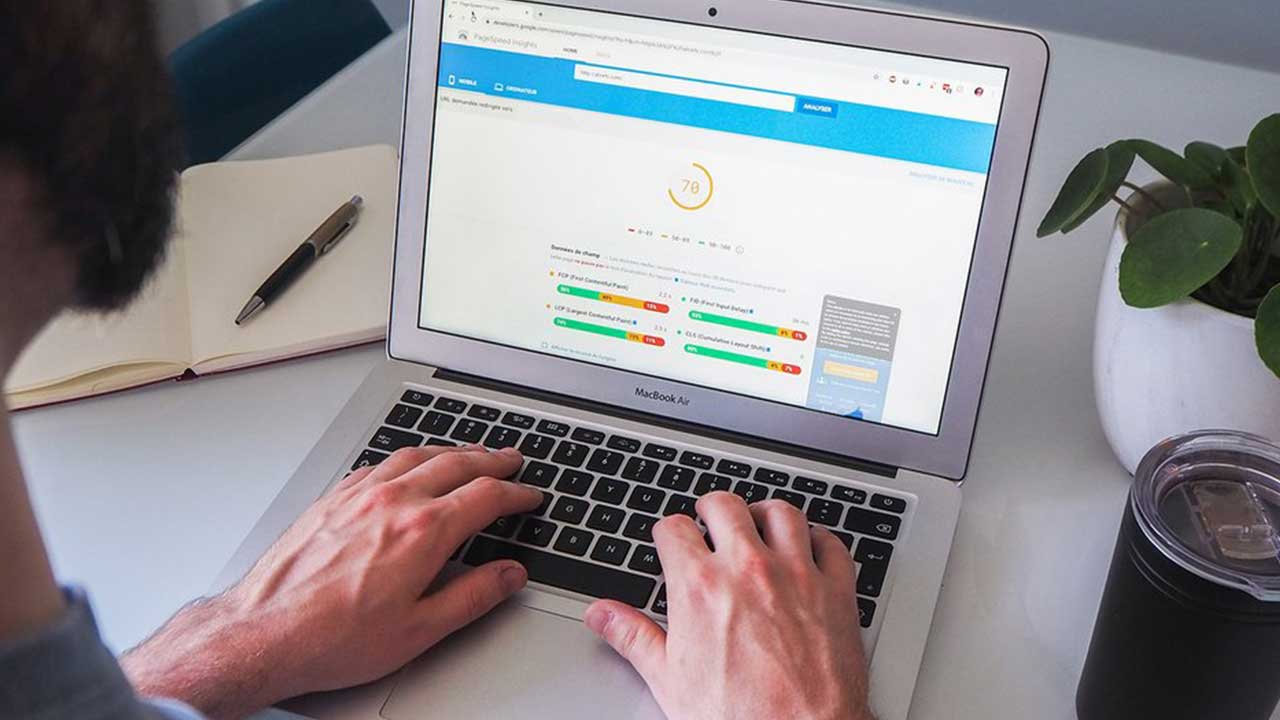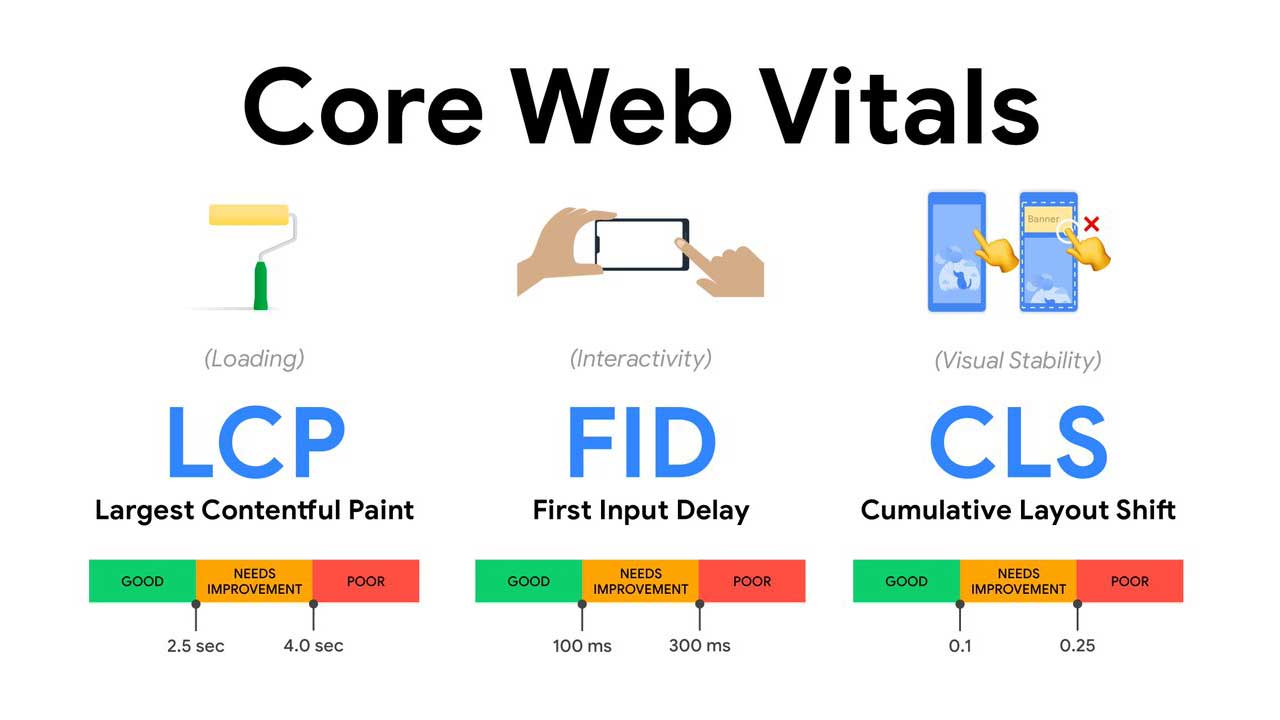Shh! Don’t Share This Google Core Web Vitals Insider Secrets
Google has announced that it would begin to evaluate “Page Experience” in Search ranking, as measured by a set of standards known as Core Web Vitals. Many of us are thinking about or have been requested to verify that we have cleared our Core Web Vitals, but how do you determine if you have? Addressing that question is more difficult than you may expect. Although many solutions are now revealing these Core Web Vitals, there are many important principles and complexities to understand.
Many technologies, including GTMETRIX, even Google services such as Page Speed Insights as well as the Core Web Vitals report in Google Search Console, appear to produce unclear data. Why is this true, & how can you ensure that your modifications are effective? Here’s a more comprehensive outlook.
What Are Google Core Web Vitals?

Google’s algorithm will alter the way in which it measures on-page accomplishment in terms of ranking. The Core Web Vitals are three metrics that assess a user’s experience when loading a webpage. These metrics assess how rapidly page content loads, how swiftly a browser loading a webpage can react to user input, & how stable the content is as it loads in the browser. These three measures, together with Mobile Friendliness, Safe Browsing, HTTPS, & Intrusive Interstitials, will be packaged into a signal Google is naming the “Page Experience Signal.” These 3 Google Core Web Vitals principles are:
- Visual Stability of Page Content
- Loading Experience
- Interactivity
Core Web Vitals centers on the user experience after a person clicks on a web page from the Google SERPs, such as whether the page loads quickly or is reliable, i.e., it does not need to load twice before it becomes clickable & navigable. Organizations should analyze their normal engagement measures, such as bounce rate, time on site, pages per session, & so on, with a greater emphasis on these elements.
These metrics, which are accessible through your Google Analytics account, reveal whether or not a user values their visit to your website after discovering it through organic search results. Core Web Vitals are a crucial series of particular elements that Google considers significant in the overall user experience of a webpage.
Core Web Vitals are indeed 3unique page performance & user interaction metrics – First Input Delay (FID), Largest Contentful Paint (LCP), & Cumulative Layout Shift (CLS) (CLS). In brief, Core Web Vitals are a subset of qualities that will be featured in Google’s “page experience” score (basically, Google’s approach to measuring your website’s overall UX). As previously indicated, the Core Web Vitals metrics for your site may be found in the “enhancements” section of your Google Search Console account.
Why Are Core Web Vitals Important?

Google aims to incorporate page experience as a Google ranking factor. Indeed, based on the statement and the wording, it’s safe to conclude that Core Web Vitals will account for the vast bulk of your page experience score. It’s critical to realize that a strong page experience score will not automatically catapult you to the top of Google’s search results. Moreover, Google was quick to point out that page experience is among the many (about 200) characteristics used to rank websites in search results. The page experience will be a combination of variables that Google deems important for user experience, such as:
- Mobile-friendliness;
- HTTPS;
- “Safe-browsing”;
- Lack of interstitial pop-ups, etc.
Largest Contentful Paint (LCP)
The time it would take for a page to load from the standpoint of an actual user is referred to as LCP. In other words, it is the time required to view the majority of the content on the screen after clicking a link. LCP is not the same as other page speed measurements. Many other page speed metrics (such as TTFB & First Contextual Paint) may not always effectively represent how a user interacts with a web page.
LCP, on the other hand, concentrates on what matters most when it comes to page speed: the capability to see & interact with your website. Your LCP score can be calculated using Google PageSpeed Insights. That’s useful, especially when it comes to recognizing areas for improvement. The advantage of utilizing Google Pagespeed Insights versus a tool like webpagetest.org is that you can see how your page fared in the real world (based on Chrome browser data).
First Input Delay (FID)
Now let’s take a look at Google’s second Core Web Vital – First Input Delay. So, your page has FCP at this level. But the question is whether users will be able to interact with your page. That’s what exactly FID tracks: the amount of time it takes a user to interact with your page. Google relies on FID to assess how real-world consumers interact with websites. Yes, FID essentially tracks how long it takes for things to happen on a page.
In that sense, it’s a page speed score. Yet, it goes a step further & assesses the time it takes for users to complete a task on your page. For a page that is all content (such as a blog), FID is probably not a major problem. Scrolling the page is the only true “interaction” – Alternatively, pinching to zoom in & out. Other interactions include the following:
- Clicking on the site’s navigation link;
- Choosing an option from a menu;
- Entering email or data into a field;
- Opening up “accordion text” on mobile devices;
Cumulative Layout Shift (CLS)
A page’s Cumulative Layout Shift (CLS) reflects how consistent it is while loading (aka “visual stability”). In other words, if your page’s elements move while the page loads, you have a high CLS. That is not a good thing. Rather, you want your page elements to be somewhat stable as they load. Once the page has fully loaded, visitors will not have to re-learn where links, graphics, or forms are located, or you may unintentionally click on something.
Which Users Are Included in the Chrome User Experience Report?

The Web Vitals are slow to update even though the field data is based on the most recent 28 days of data from Chrome User Experience Report (CrUX), and it’s only the 75th percentile of that data. Utilizing 28 days of data as well as the 75th percentiles of data is advantageous since it eliminates variances and extremes to offer a more realistic assessment of your site’s performance without generating a lot of noise that is difficult to understand.
As performance indicators are especially susceptible to network and device clutter, you must smooth out this influence to get to the real story of how your website performs for the vast majority of visitors. Nevertheless, they are excruciatingly slow to update, resulting in a very slow feedback loop from resolving faults until you see the results of that adjustment reflected there.
The 75th percentile – p75 in particular, as well as the delay it produces, is noteworthy. It investigates which metric accounts for 75% of your visitors’ page views over a 28-day period for every one of the Core Web Vitals. As a result, it has the maximum Core Web Vitals score of 75% of your page visitors (or conversely, the lowest Core Web Vitals score that 75% of your page views will have less than). Thus it is not the average of this 75% of page views, but rather the worst value of that set of numbers.
How Do You Enhance Your Core Web Vitals in WordPress?
Each statistic requires a unique set of tactics. The majority of gains involve implementing WordPress performance best practices, with a few areas of concentration – which is why choosing the best WordPress caching plugin will help you with no trouble on your part.
Improving Largest Contentful Paint(LCP) on WordPress
Largest Contentful Paint is the most evident statistic to optimize for, as it is based solely on WordPress performance best practices:
- Optimize browser caching.
- Set up page caching.
- Optimize your images.
- Use server-level compression.
- Optimize your code.
- Use preconnect for important resources.
- Use a content delivery network – CDN for global audiences.
Improving Cumulative Layout Shift(CLS) on WordPress
Optimizing for Cumulative Layout Shift is a little more sophisticated since it interacts with your website’s code. The following are some of the most common challenges & solutions:
- Optimize web fonts (FOIT/FOUT)
- Fix images without dimensions
- Fix ads, embeds, and iframes without dimensions
- Be careful with injected content.
Improving First Input Delay(FID) on WordPress
Since First Input Delay is entirely code-based, it is the most challenging to optimize. You’ll want to reduce heavy JavaScript execution to a minimum so that the browser can respond quickly to user inputs. If at all possible, start by deleting any unwanted JavaScript. By doing so, you will address PageSpeed suggestions such as “Reduce javascript execution time,” “Remove unused JavaScript,” and “Minimize main thread work” Enhancing FID in general, if you are not a developer, might be difficult.
How to Check Google Core Web Vitals for a Website?
Submitting a URL into PageSpeed Insights is the most straightforward way to get a quick look at the Core Web Vitals for a particular URL as well as the full origin. Gain access to Google Search Console to learn how Google perceives your complete website’s Core Web Vitals. This is a free Google service that explains how Google perceives your complete website, especially the Core Web Vitals.
SEO teams have historically used Google Search Console. However, the metrics that site developers will require to handle are Core Web Vitals. If they haven’t previously, development teams should have access to this innovation as well. To acquire access, you must first register a Google account and then verify ownership of the site by a variety of techniques (placing a file in your webserver, adding a DNS record, etc.). The Google Search Console Core Web Vitals summary offers an overview of how your site has done in terms of the Core Web Vitals over the last 90 days.
How to Fix Slow Server Response Time
Server response time – SRT is the amount of time that elapses between a client requesting a page in a browser and a server responding to that request. It is measured by TTFB (Time to First Byte). After submitting an HTTP query, the time it takes to receive the first byte of a page is measured in milliseconds. Here are 7easy ways to increase the server response time of your website:
- Keep WordPress Lightweight
- Use a CDN
- Optimize Databases
- Use Reliable and Fast Web Hosting
- Monitor PHP Usage
- Configure Caching
- Minify Scripts
Enhancing Core Web Vitals Is Critical For Success!
If you aren’t ready & haven’t focused on optimizing your web pages, don’t be surprised if you struggle to enhance your organic ranks. Remember that your website does not have to be the best or fastest on the internet; rather, you should try to have your website perform the best against your competitors.
If you’ve not already, start working on optimizing your website right away. Those that do little to enhance the user experience will almost certainly see a decline in rankings, a change in rank allocation, as well as a drop in engagement metrics such as higher bounce rate, less time on site, fewer pages per session, and so forth.
Philly SEO PRO Is At The Forefront Of Innovative & Trending Technologies
Google Core Web Vitals is relevant, and users will search & buy from sites that offer the best experience to them. Do you want to learn more about Philly SEO PRO’s Core Web Vitals services? From Google Core Web Vitals to technical SEO, link building, reporting, and more, our professionals are here to help you rank on the first page of search engine results. Contact Philly SEO PRO today & we will be pleased to answer any queries you may have!

